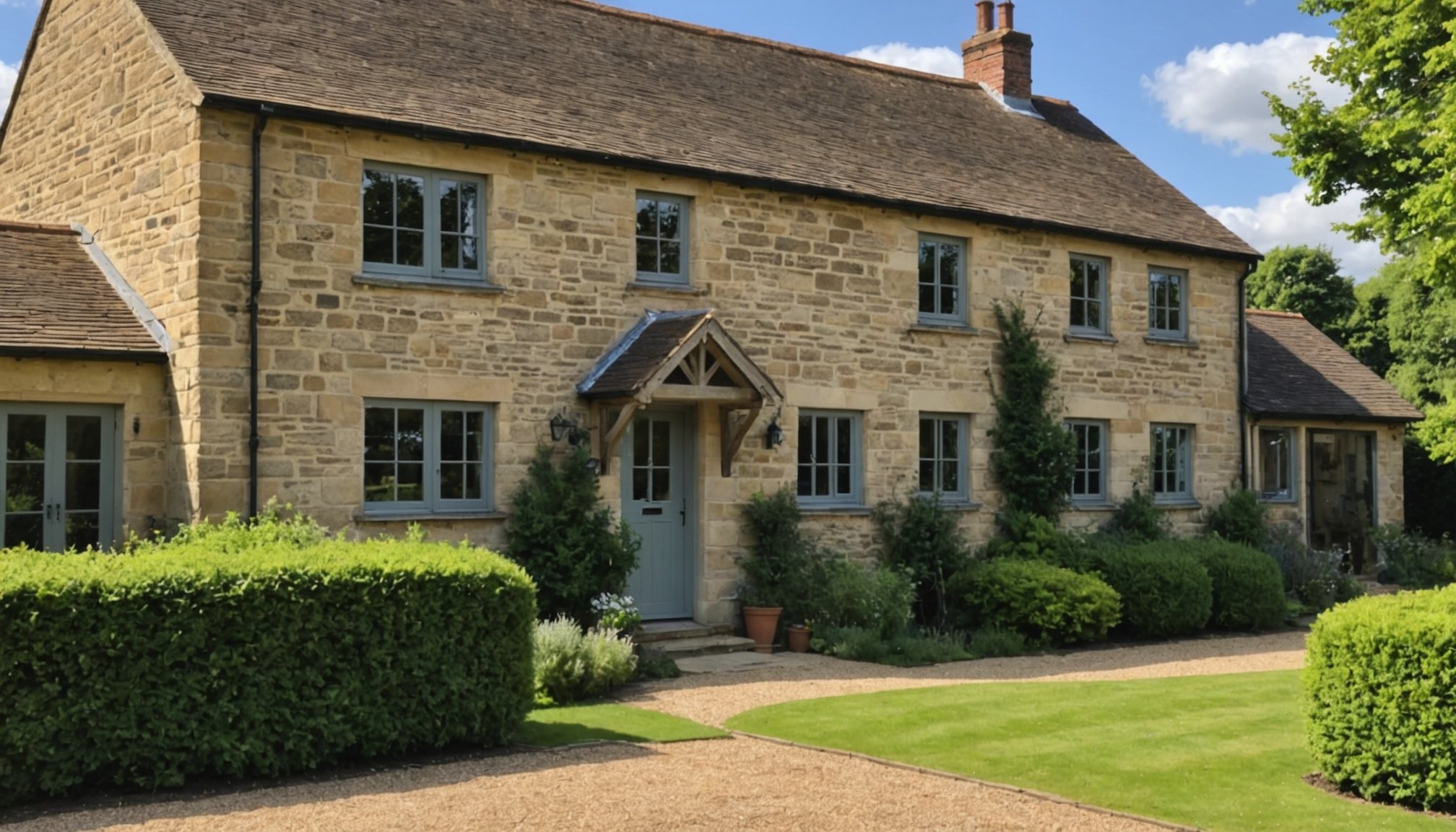Overview of Financial Challenges in UK Farmhouse Renovation
Renovating a farmhouse in the UK can be a financially daunting task, often filled with unexpected hurdles. Understanding financial challenges in this area is crucial for those planning such a project. One of the most common pitfalls is underestimating the farmhouse renovation costs. With properties often located in rural areas, issues such as long-distance transport of materials and the scarcity of local skilled labour can significantly inflate the budget.
Moreover, many farmhouses are heritage properties, which brings its own set of difficulties. The heritage regulations in the UK can lead to increased expenses due to stringent guidelines that ensure the preservation of historical elements. These rules may necessitate the use of specialised craftsmen and authentic materials, further driving up costs.
Additional reading : Evaluating the Market Opportunities for Transforming UK Agricultural Structures into Dream Homes
Additionally, unforeseen structural problems are frequent in older buildings, leading to additional expenditures that can strain financial resources. This can include fixes for deteriorating foundations or obsolete plumbing and electrical systems, all contributing to the restoration costs.
For those embracing farmhouse renovation, being aware of these challenges allows for better preparation. Understanding the scope of potential financial challenges is key to navigating the renovation process with fewer surprises and more successful outcomes.
Topic to read : Essential Cost Factors for UK Homeowners Installing Electric Vehicle Charging Stations
Budgeting for Your Renovation
When planning a renovation, especially for UK farmhouses, a detailed breakdown of costs is essential. Start by listing all potential expenses, from materials to labour. This not only ensures that you capture the full scope of your renovation budgeting but also helps in cost estimating more accurately. For instance, consider costs specific to UK farmhouses, such as local stone or specialist craftsmen.
Once you have detailed your anticipated expenses, it’s crucial to implement effective budget management tools. Spreadsheets and renovation-specific apps can offer a methodical approach to monitor expenditures. Update these tools regularly to track progress and adjust any unforeseen variations in costs.
A pivotal component of intelligent budgeting is factoring in a contingency fund. Renovations often come with unexpected surprises that can derail your plans if not accounted for beforehand. Judiciously allocate at least 10-15% of your total budget for unexpected expenses. This buffer can prevent financial strain in the event of complications such as structural repairs or delays due to weather.
By combining thorough cost estimation with proactive budget management, you can navigate the complexities of farmhouse renovations with confidence and control.
Funding Options for Farmhouse Renovations
Renovating a farmhouse can be a significant financial undertaking, but there are various funding options available to ease the process. Exploring these options will help you make informed decisions that suit your specific needs.
Traditional Financing
Traditional financing involves securing bank loans or mortgages specifically tailored for renovations. These options are reliable and typically provide a substantial amount of funds. They usually require a robust credit history and can offer competitive interest rates. However, drawbacks include potential lengthy approval processes and mandatory collateral, which can sometimes complicate matters.
Government Grants and Incentives
In the UK, several government grants and incentives promote the restoration of rural properties. These grants for restorations often require the property to be of historical significance. Eligibility usually mandates certain criteria, such as proof of residence and adherence to environmentally sustainable practices. The application procedures, though often rigorous, can yield substantial financial aid for your renovation project.
Alternative Funding Sources
For those considering less conventional methods, alternative funding sources like crowdfunding and community financing offer viable options. Engaging local communities can garner public support, often crucial for maintaining cultural heritage. Additionally, forming partnerships with local heritage organizations can provide access to funding and expert advice. These routes emphasize collaboration and community empowerment while supporting your renovation goals.
Cost-effective Renovation Strategies
Renovating your home can be a substantial investment, but employing cost-saving strategies ensures a financially sound approach. Begin by prioritising renovations that promise significant financial impact. Focusing on areas like kitchens and bathrooms typically offers the best return on investment. Planning is key; evaluate what aspects truly need enhancement and tackle them first.
Implementing energy-efficient solutions is another smart move to reduce long-term costs. Consider upgrading insulation, installing double-glazed windows, or investing in smart thermostats. These changes might initially seem costly but prove beneficial by drastically lowering energy bills over time. A sustainable design not only promotes environmental responsibility but also stretches your renovation budget further.
Sourcing materials and labor locally can also contribute to your financial strategy. Local suppliers often offer competitive prices due to reduced transportation costs. Moreover, finding skilled labourers nearby not only saves travel expenses but also bolsters community employment.
- Prioritise impactful renovations
- Opt for energy-efficient upgrades
- Support local businesses for materials and labour
Each of these renovation tips aids in optimising your renovation experience, ensuring that every pound spent is a step towards a more efficient and beautiful home.
Navigating Regulations and Compliance
Understanding the UK building regulations is crucial when renovating a farmhouse, especially for heritage properties. These regulations ensure safety, energy efficiency, and accessibility in construction projects. For heritage properties, additional guidelines may apply to preserve historical and architectural significance.
Compliance is not just about following the law; it plays a vital role in maintaining and potentially increasing your property’s value. Renovations carried out in accordance with regulations are more likely to receive approval from potential buyers and preserve the property’s historical character. In contrast, non-compliance can result in costly modifications or fines.
When tackling renovations on rural estates, navigating the planning permission process can be daunting. Planning permission is mandatory for significant changes to a property, such as extensions or alterations to listed buildings. Familiarity with this process helps ensure your renovation aligns with local council expectations and avoid unnecessary hurdles.
Several steps are involved in securing planning permission for a rural estate:
- Acquiring appropriate documentation and blueprints
- Consulting with local authorities
- Addressing environmental and heritage concerns
By understanding these aspects, you can better manage your renovation project and support sustainable development practices in the UK countryside.
Case Studies and Real-life Examples
Delving into real-life renovation case studies provides invaluable insights into successful projects, especially when it comes to UK farmhouse renovations. These case studies often begin with a clear vision and strategy, with homeowners making informed financial decisions to craft their dream homes.
One standout example is the transformation of a derelict farmhouse in the Cotswolds. This project showcased how adhering to a defined budget and incorporating expert insights led to a harmonious blend of modern comfort and rustic charm. The homeowners’ choice to prioritise insulating the property early on underscored the importance of energy efficiency—a decision that not only reduced future utility bills but also increased the property’s value.
However, not all renovations go without hitches. Common pitfalls include underestimating timeframes or neglecting structural repairs. Learning from these mistakes, successful projects often employ phased approaches, ensuring no aspect is overlooked and budget overruns are minimised.
Through success stories, aspiring renovators gain a roadmap to navigating similar challenges. Such case studies empower individuals to make educated choices, leveraging past lessons to avoid common mistakes. Thus, they can confidently embark on their renovation journeys, enhancing property value while realising their visions.











